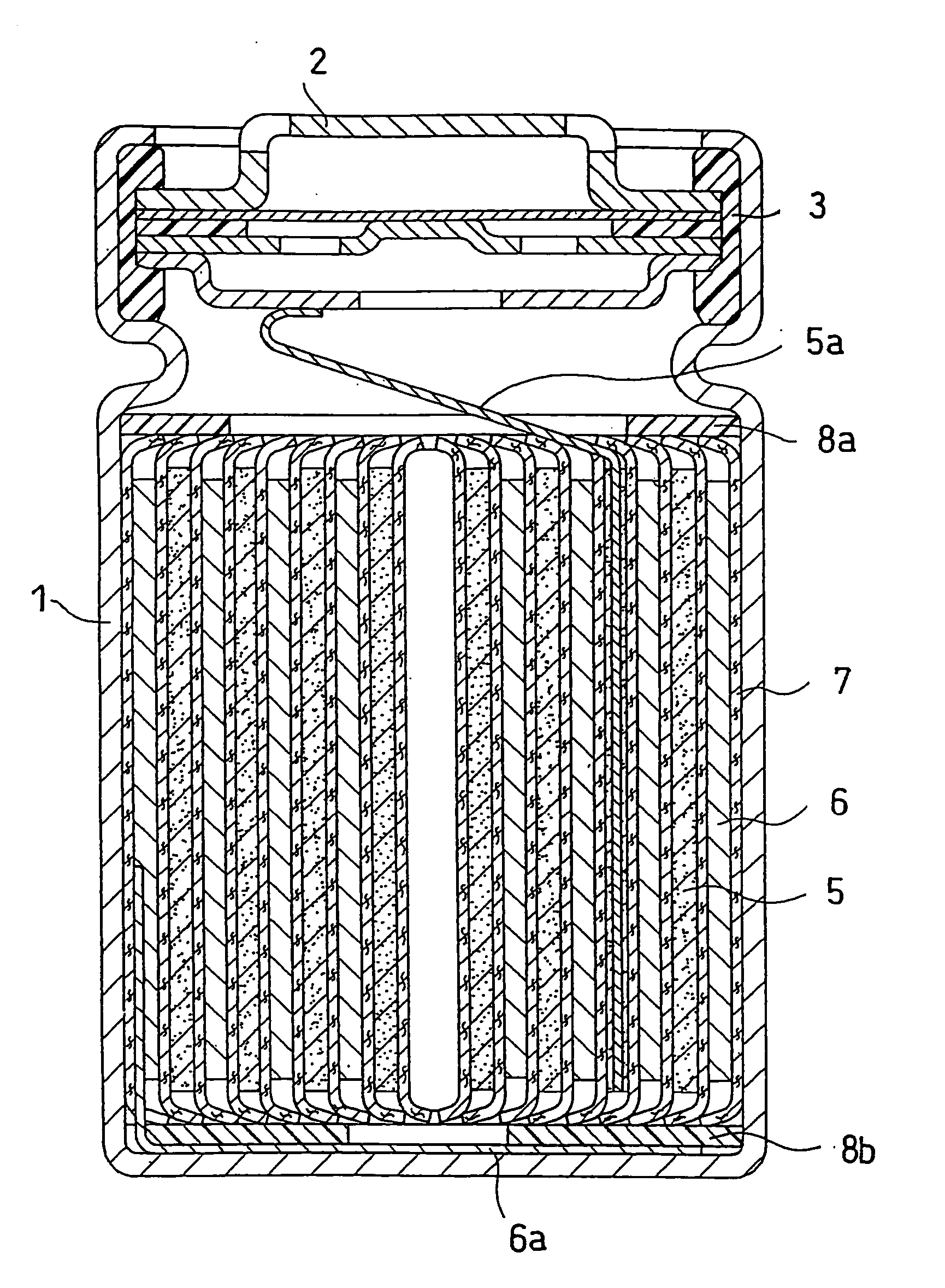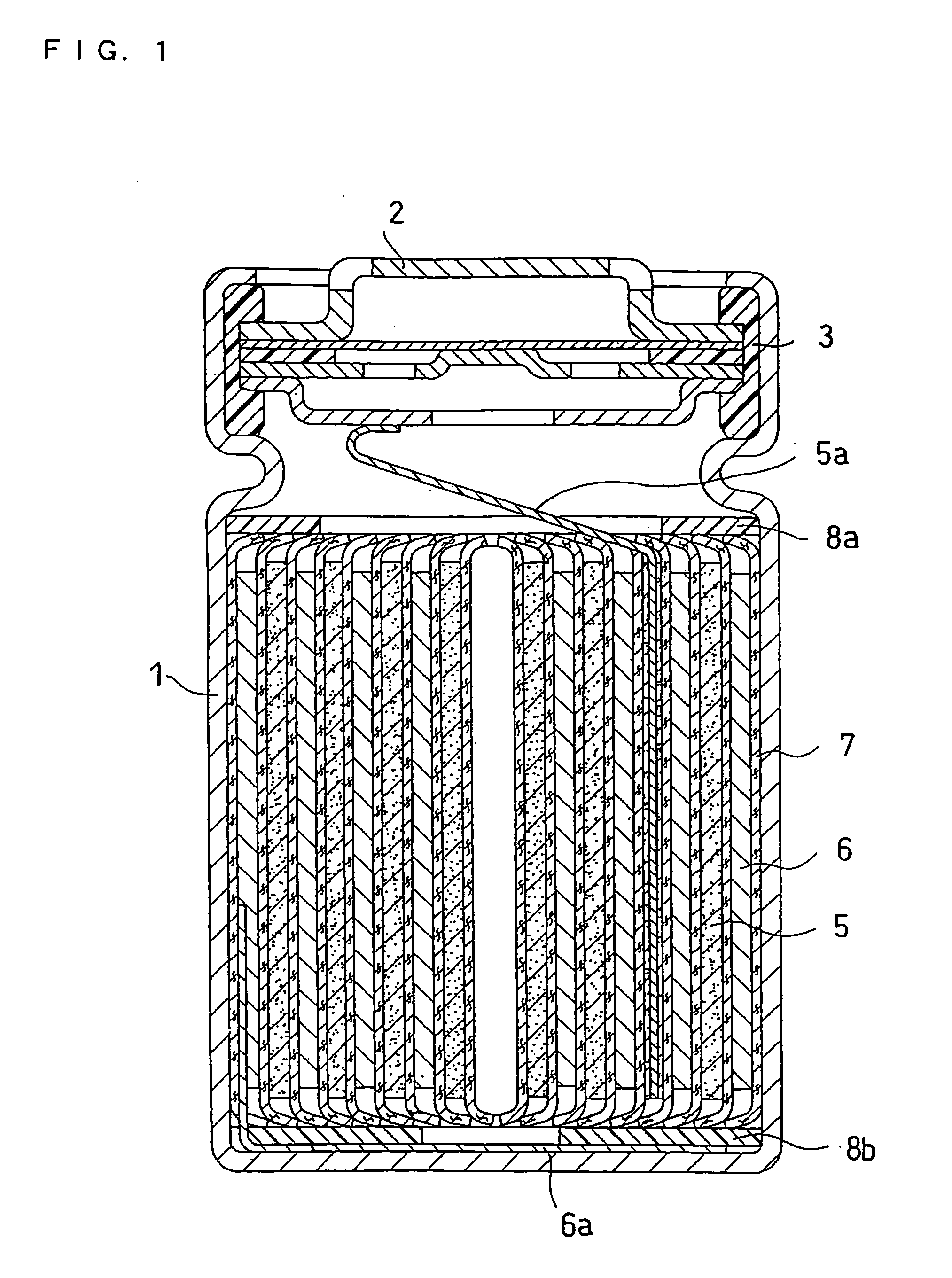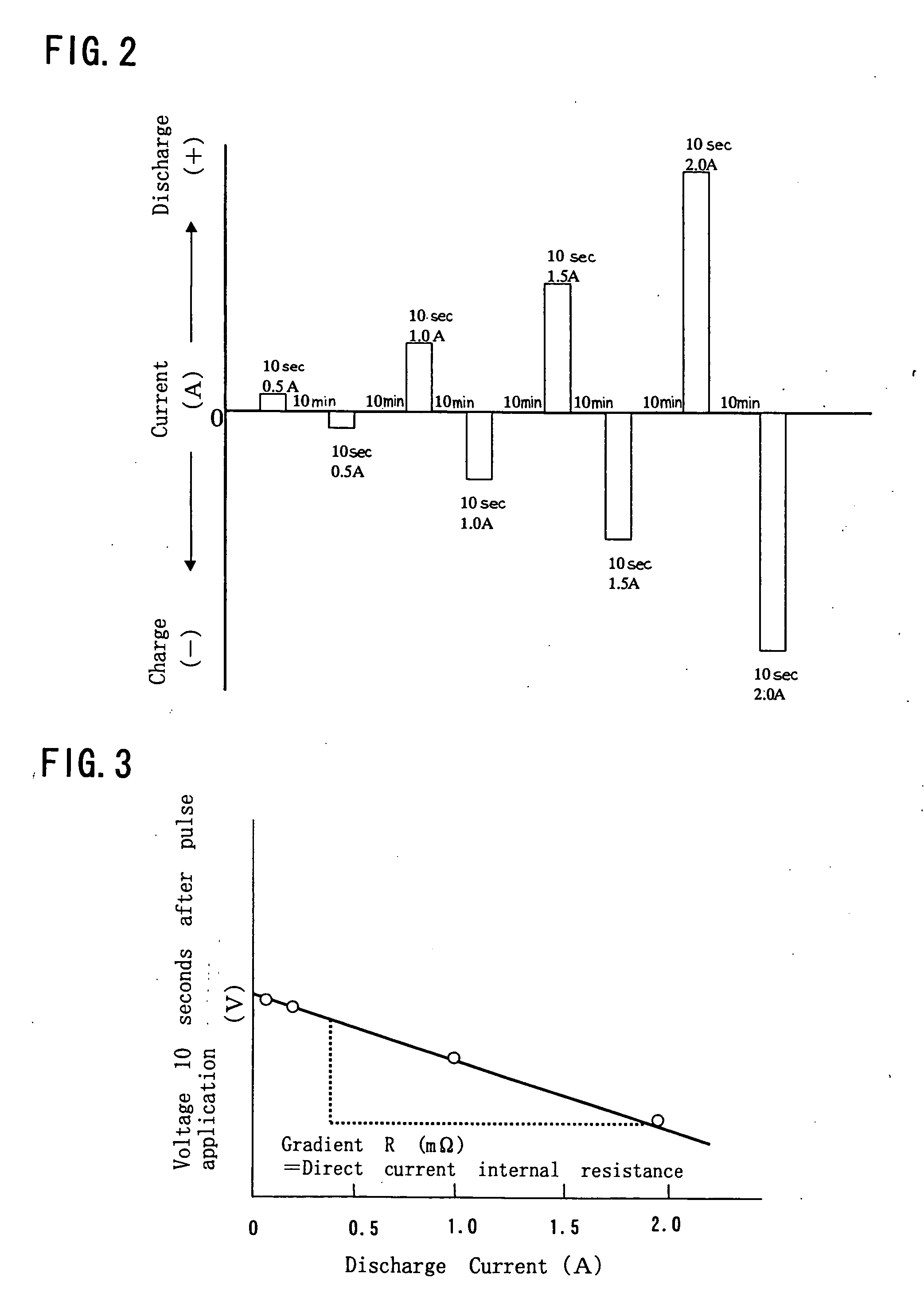Non-aqueous electrolyte secondary battery
a secondary battery and electrolyte technology, applied in the manufacture of final products, cell components, electrochemical generators, etc., can solve the problem that the hei 9-231973 cannot provide sufficient improvement of storage characteristics, and achieve good high input/output characteristic and storage characteristics, favorable storage characteristics, and high reliability
- Summary
- Abstract
- Description
- Claims
- Application Information
AI Technical Summary
Benefits of technology
Problems solved by technology
Method used
Image
Examples
example 1
Battery A
(a) Production of Positive Electrode
[0061] A lithium nickel composite oxide represented by the formula: Li1.01Ni0.82Co0.15Al0.03O2 was prepared in the following procedure.
[0062] A mixed aqueous solution having a nickel sulfate concentration of 0.164 mol / L, a cobalt sulfate concentration of 0.030 mol / L and an aluminum sulfate concentration of 0.003 mol / L was fed into a beaker. To the aqueous solution in the beaker was added dropwise 0.1 mol / L sodium hydroxide aqueous solution to proceed with a precipitation reaction. With constant stirring, the reaction was continued for 30 hours to precipitate a hydroxide, during which the pH of the aqueous solution in the beaker was adjusted to 10 and the temperature was kept at 30° C. The resulting precipitate was filtrated, washed with water and dried at 80° C. Thereby, Ni0.82Co0.15Al0.03(OH)2 (hydroxide A) having a tap density of 2.3 g / ml and an average particle size of about 10 μm was obtained.
[0063] The obtained Ni0.82Co0.15Al0.0...
example 2
Battery L-1
[0108] A positive electrode active material L-1 represented by the formula: L0.93Ni0.82Co0.15Al0.03O2 having an average particle size of 8.0 μm was produced in the same manner as the positive electrode active material A was prepared except that, in the preparation of the lithium nickel composite oxide, lithium hydroxide monohydrate was added to the hydroxide A after the first baking such that the ratio between the total atomic number of Ni, Co and Al and the atomic number of Li was 1.00:0.93. The positive electrode active material L-1 thus obtained had a true specific gravity of 4.80 g / ml, a tap density of 2.1 g / ml and an average primary particle size of 0.3 μm.
[0109] Subsequently, a battery L-1 was produced in the same manner as the battery A was produced except that the positive electrode active material L-1 was used.
Battery L-2
[0110] A positive electrode active material L-2 represented by the formula: Li0.95Ni0.82Co0.15Al0.03O2 having an average particle size of 8....
PUM
| Property | Measurement | Unit |
|---|---|---|
| voltage | aaaaa | aaaaa |
| pore radius | aaaaa | aaaaa |
| particle size | aaaaa | aaaaa |
Abstract
Description
Claims
Application Information
 Login to View More
Login to View More - R&D
- Intellectual Property
- Life Sciences
- Materials
- Tech Scout
- Unparalleled Data Quality
- Higher Quality Content
- 60% Fewer Hallucinations
Browse by: Latest US Patents, China's latest patents, Technical Efficacy Thesaurus, Application Domain, Technology Topic, Popular Technical Reports.
© 2025 PatSnap. All rights reserved.Legal|Privacy policy|Modern Slavery Act Transparency Statement|Sitemap|About US| Contact US: help@patsnap.com



